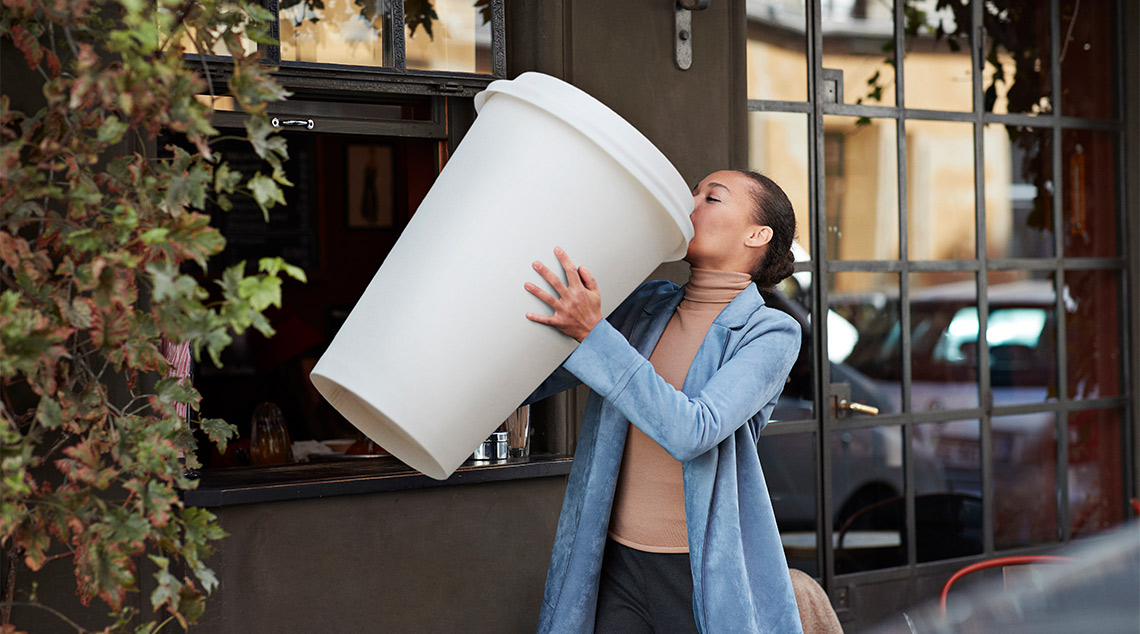How much caffeine are you really drinking?
In large doses, caffeine can be bad for your health, so it pays to keep a lid on your intake. But how much is too much? And are you consuming more than you think?
Caffeine is found in coffee and tea as well as energy drinks, chocolate and some soft drinks, so it’s easy to see how consumption can climb.
If you’re thinking, “So what?”, remember caffeine is a drug.
“It is classified as a stimulant drug, which means it speeds up the messages travelling between the brain and the body,” Alcohol and Drug Foundation CEO Dr Erin Lalor says.
“Consuming caffeine can make a person feel more alert, energetic or sociable; however, for some, it can also have negative side effects including anxiety, irritability, interrupted sleep, dehydration, headache and stomach pains.”
Regular, heavy use may even cause an irregular heart rate, low blood pressure and, for women past menopause, osteoporosis.
Caffeine may be bad for your brain
While research shows light-to-moderate coffee consumption is good for heart health, an Australian study suggests drinking too much is bad news for your brain.
“We found that higher coffee consumption was associated with smaller brain volumes, and consumption of more than six cups per day was linked to a 53 per cent increase in risk of dementia,” lead researcher Kitty Pham, of the University of South Australia, says.
While the study didn’t explore the exact mechanism, Kitty says they weren’t surprised by the findings.
“The link we found between coffee and brain health is consistent with an earlier randomised control trial which found that higher caffeine was associated with smaller grey matter volumes,” she says.
How much caffeine is in a cup of coffee?
Or in an energy drink or a can of cola? And how does tea stack up?
The amount of caffeine in an espresso is around 145mg per 50ml, while a teaspoon of instant coffee contains 80mg.
There’s about 36mg of caffeine in a 375ml can of cola and 80mg in a 250ml serve of energy drink, while a cup of black tea contains 50mg of caffeine.
The Food Standards Code actually restricts how much caffeine can be added to energy and cola-type drinks, saying they can’t contain more than 32mg and 14.5mg per 100ml respectively.
Products available for general sale in Australia meet these standards, but those available via online retailing sites may not.
For example, Prime Energy, the energy drink with a cult-like following, contains a whopping 200mg of caffeine per can.
That is significantly more than – and sometimes even double – the recommended daily maximum level of caffeine for kids and teens.
How to rein in your caffeine consumption
“We suggest drinkers exercise moderation in their coffee and caffeine intake,” Kitty says.
“And remember to have a cup of water with your coffee to stay well hydrated.”
Food Standards Australia New Zealand guidelines suggest adults should consume no more than 400mg of caffeine a day – which is 5 teaspoons of instant coffee, or roughly 2.75 espressos – while those under 18 should avoid consuming more than 3mg of caffeine per kilogram of bodyweight, in a single daily serving.
And if you’re pregnant, stick to no more than 200mg of caffeine a day.
Dr Lalor says if you’re unhappy with your caffeine consumption or its causing you negative side effects, it might be time to cut back.
“Thinking about your reasons for wanting to cut back, such as better sleep or reduced anxiety, can help you form strategies to do so,” she says.
“Strategies to reduce your intake might include replacing some of your caffeinated drinks with non-caffeinated beverages, or distraction techniques if you experience cravings, such as going for a walk, playing a game or even brushing your teeth.”
More on caffeine and coffee:
- The lowdown on energy drinks
- Best coffee alternatives to slash your intake
- Should you drink coffee during pregnancy?
- 7 things you can do with coffee (other than drink it)
Written by Karen Fittall.





